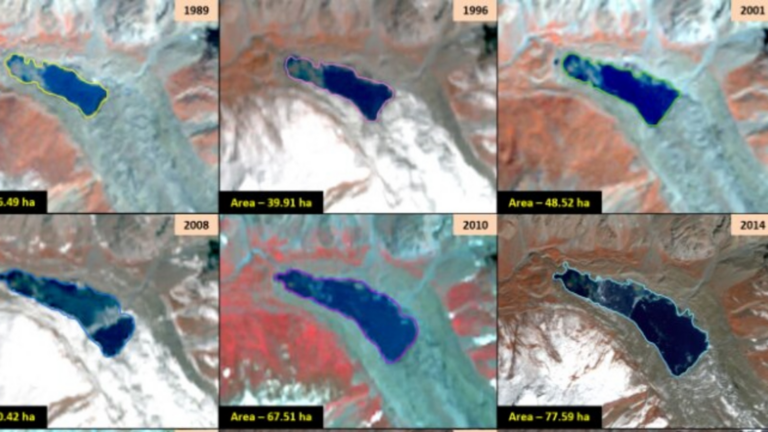
[ad_1]
Indian Space Research Organisation (ISRO) said on Monday an analysis of decades of satellite imagery has revealed that glaciers across the Indian Himalayas—often called the Third Pole because of extensive glaciers and snow cover—are melting at an unprecedented rate, resulting in significant expansion of the glacial lakes.
“This retreat leads to the formation of new lakes and the enlargement of existing ones in the Himalayan region. These bodies of water, created by the melting of glaciers, are known as glacial lakes and play a crucial role as freshwater sources for rivers in the Himalayan region,” the ISRO said in a release.
“They also pose significant risks, such as Glacial Lake Outburst Floods (GLOFs), which can have devastating consequences for communities downstream. GLOFs occur when glacial lakes release large volumes of meltwater due to the failure of natural dams, such as those made of moraine or ice, resulting in sudden and severe flooding downstream,” the release added.
It is important to note that research conducted worldwide has consistently shown that glaciers across the globe have been experiencing unprecedented rates of retreat and thinning since the onset of the Industrial Revolution in the eighteenth century.
Using the satellite imagery from 1984 to 2023, the ISRO noted that of 2,431 glacial lakes of the Indian Himalayas —larger than 10 hectares identified during the 2016-17 satellite survey, 676 glacial lakes have expanded since 1984. This includes 130 lakes situated within India—65 lakes located in the Indus River basin, 7 in the Ganga River basin, and 58 in the Brahmaputra River basin.

View Full Image
The Bengaluru-based Indian space agency further said 89% of lakes (601 of 2,431 lakes) have expanded more than twice, 10 lakes have grown between 1.5 to 2 times and 65 lakes have expanded at 1.5 times of their size in 1984.
The ISRO study further noted that 314 lakes located in the 4,000 to 5,000 meters range and 296 lakes are above 5,000 meters elevation.

View Full Image
The glacial lakes are categorised based on their formation process into four broad categories, namely Moraine-dammed (water dammed by moraine), Ice-dammed (water dammed by ice), erosion-dammed (water dammed in depressions formed by erosion), and other glacial lakes. Among the 676 expanding lakes, the majority of them are Moraine-dammed (307) followed by Erosion (265), other (96), and Ice-dammed (8) glacial lakes, respectively.
Long-term changes in the Ghepang Ghat glacial lake (Indus River Basin) at an elevation of 4,068 meters in Himachal Pradesh, show a 178% increase in size from 36.49 hectares to 101.30 hectares between 1989 and 2022. The rate of increase is about 1.96 hectares per year.
Unlock a world of Benefits! From insightful newsletters to real-time stock tracking, breaking news and a personalized newsfeed – it’s all here, just a click away! Login Now!
Download The Mint News App to get Daily Market Updates.
Published: 22 Apr 2024, 08:52 PM IST
[ad_2]